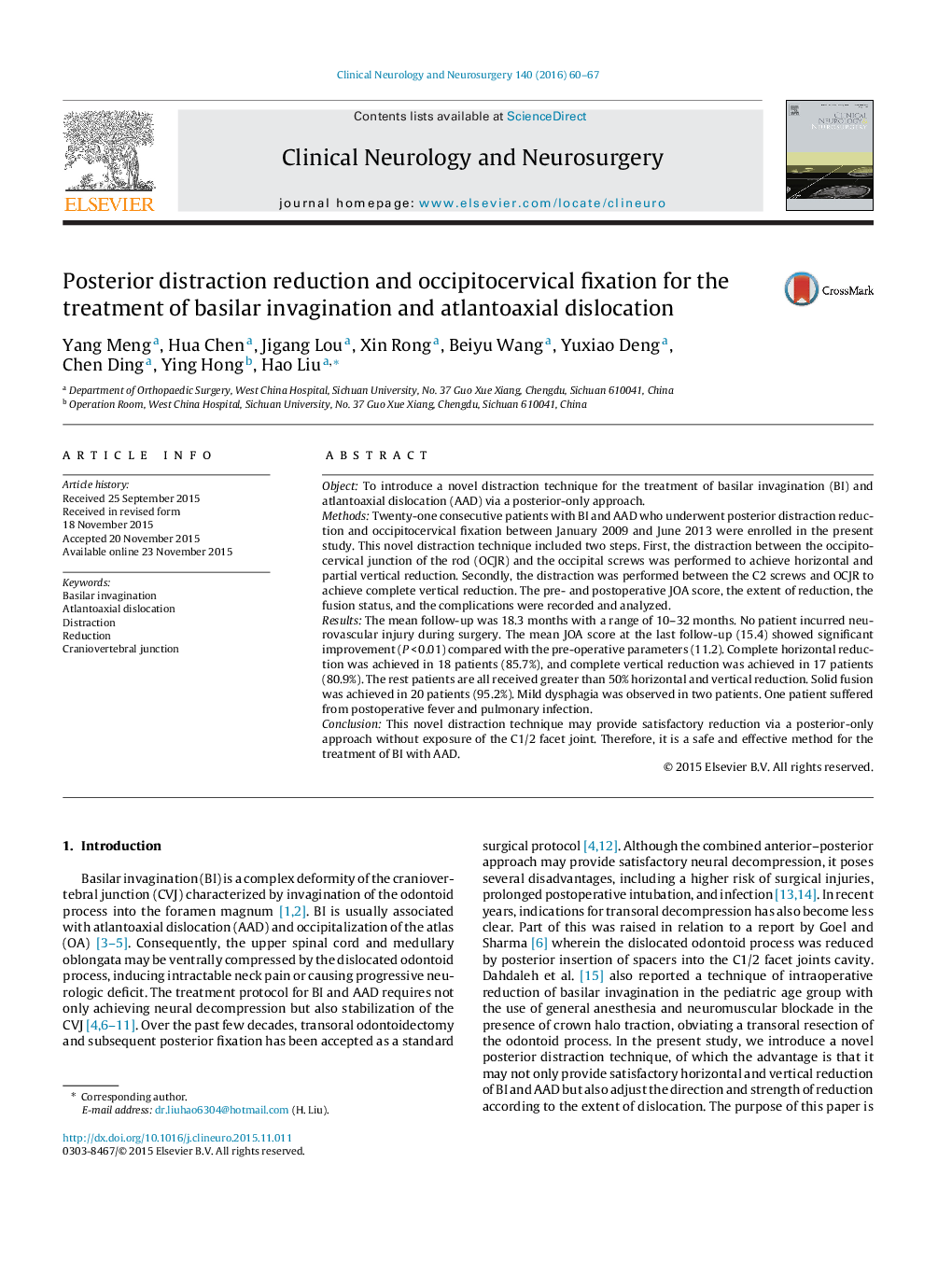| کد مقاله | کد نشریه | سال انتشار | مقاله انگلیسی | نسخه تمام متن |
|---|---|---|---|---|
| 3039672 | 1579682 | 2016 | 8 صفحه PDF | دانلود رایگان |

• Basilar invagination (BI) is complex occipitocervial deformity.
• Satisfactory reduction of BI was achieved without the exposure of C1/2 facet joint.
• This technique allows for adjustment of the direction and strength of reduction.
ObjectTo introduce a novel distraction technique for the treatment of basilar invagination (BI) and atlantoaxial dislocation (AAD) via a posterior-only approach.MethodsTwenty-one consecutive patients with BI and AAD who underwent posterior distraction reduction and occipitocervical fixation between January 2009 and June 2013 were enrolled in the present study. This novel distraction technique included two steps. First, the distraction between the occipitocervical junction of the rod (OCJR) and the occipital screws was performed to achieve horizontal and partial vertical reduction. Secondly, the distraction was performed between the C2 screws and OCJR to achieve complete vertical reduction. The pre- and postoperative JOA score, the extent of reduction, the fusion status, and the complications were recorded and analyzed.ResultsThe mean follow-up was 18.3 months with a range of 10–32 months. No patient incurred neurovascular injury during surgery. The mean JOA score at the last follow-up (15.4) showed significant improvement (P < 0.01) compared with the pre-operative parameters (11.2). Complete horizontal reduction was achieved in 18 patients (85.7%), and complete vertical reduction was achieved in 17 patients (80.9%). The rest patients are all received greater than 50% horizontal and vertical reduction. Solid fusion was achieved in 20 patients (95.2%). Mild dysphagia was observed in two patients. One patient suffered from postoperative fever and pulmonary infection.ConclusionThis novel distraction technique may provide satisfactory reduction via a posterior-only approach without exposure of the C1/2 facet joint. Therefore, it is a safe and effective method for the treatment of BI with AAD.
Journal: Clinical Neurology and Neurosurgery - Volume 140, January 2016, Pages 60–67